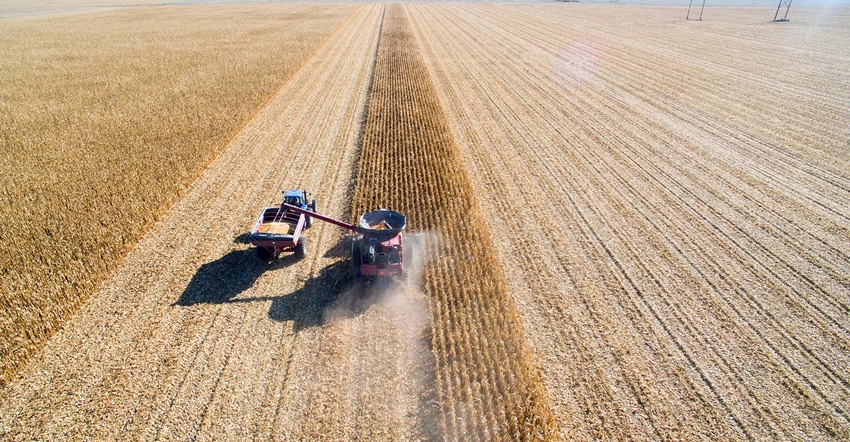
What a roller coaster of emotions these past three months have been! Changing weather patterns along with extremely volatile geopolitical issues have caused traders to yo-yo back and forth all summer. The biggest question we have all tried to answer was, “Did this summer’s weather adversely affect the world crop?” And our answer seemed to change with every 6-10 day forecast. The world is so focused on food supply right now, any hiccups in production are a major cause for concern. And while weather and food supply are impossible to predict, they are the keys to our markets. So how do we manage through this volatility?
Develop a plan
In my experience, when extreme price swings enter our marketplace, the best way to navigate them is with a sound plan that can be replicated over and over. We need a plan that doesn’t rely on having to predict the future, one that works even when we get emotional, and one that is easy to understand. I guarantee most of us already have a plan put together for fall combining, fall tillage, and fall fertilizer/chemicals. Our plan for fall marketing should be no different.
Ask yourself three simple questions
Using current yield projections, will you need to deliver grain to the elevator this fall?
Do you already have grain marketed, and is there a chance you might need to deliver more?
Are there advantages to using the money this year or do you need to defer it until 2023?
If you answered “yes” to the first question, then you have some decisions to make here soon. You obviously will have to decide where you physically take your grain this fall. Those decisions will be based on both logistical, as well as monetary reasons. It’s not always just about what location has the best bid. Sometimes, especially during the fall rush, it’s about how you can keep your harvest moving. The five cents/bu bump in price loses its luster when your truck is stuck in line and your combine is sitting. Staying flexible is the key to delivering fall grain.
If you answered “yes” to the second and third questions, this is where your marketing skills will come into play. If you have grain already marketed for fall, then hopefully the price you locked in is much higher than what it will be at delivery time. Usually, the harvest delivery price for grain is close to the lowest price of the year. Large supplies during that timeframe typically drive the futures price lower and the basis wider. Because of this, you are forced to decide about your unsold production at a difficult time.
There are two decisions you can make. You can either put it in commercial storage or sell the bushels across the scales. If you put the bushels in commercial storage, then elevator rates apply. In Central Illinois, most storage rates from Oct. 1 through Dec. 31 will cost around 25-30 cents/bu.
The biggest advantage with storage is that you can still participate in the basis improvement that occurs between delivery and pricing. However, you can’t take payment for the grain if placed in commercial storage, and there is no guarantee that prices rally after harvest. You might just pay for the ability to sell your grain at a lower price later. We’ve all been there, done that, and it’s no fun!
But by selling your grain across the scales, you can in fact take the payment this fall. You can use that money to take advantage of discounts on 2023 inputs like seed, fertilizer, and chemicals. Typically, early payment discounts on inputs can be as high as 10-15%. That’s HUGE in a marketplace where costs are running wild right now! The biggest disadvantage to selling across the scales is that you are forced to lock in the basis, and you can’t take advantage of post-harvest price rallies.
But that’s not the case if you buy call options to protect the upside.
Protect upside with call options
Call options are a great tool to use with harvest-delivered bushels. They provide you with the ability to participate in higher prices after harvest. Last year, July 22 futures rallied from $5.12 ¾ at the beginning of harvest on Sept. 10 to a whopping $8.24 ½ on April 29. That’s almost $3.12 in just seven months!
If you could just pick up 1/3 of that move, you would improve your harvest delivery sales dramatically! And if you could do that without taking on added risk, why not give it a try?
With calls, the more time you want to protect, the higher the cost of the call. Obviously the same is true the closer to the current price the call is that you purchase. One nice thing about call options is that you don’t have to worry about any margin call exposure. In the current volatile atmosphere, knowing your margin call risk is very important.
If you can take advantage of early pay discounts for inputs; have only the initial cost of the call as your risk if prices drop after harvest; have no margin call exposure; and can participate in upside if prices rally after harvest, how can that not be a good option for your harvest delivered grain? Start working through some scenarios now and get a plan in place on whether to store or sell/buy calls this fall.
We all know that the elevator is going to force us to make that decision. But don’t be surprised if after you work through the numbers, you find that selling across the scales and buying call options is one of the easiest marketing decisions you’ve ever made!
Good luck this fall and stay safe out there!
Contact Advance Trading at (800) 747-9021 or go to www.advance-trading.com.
Information provided may include opinions of the author and is subject to the following disclosures:
The risk of trading futures and options can be substantial. All information, publications, and material used and distributed by Advance Trading Inc. shall be construed as a solicitation. ATI does not maintain an independent research department as defined in CFTC Regulation 1.71. Information obtained from third-party sources is believed to be reliable, but its accuracy is not guaranteed by Advance Trading Inc. Past performance is not necessarily indicative of future results.
The opinions of the author are not necessarily those of Farm Futures or Farm Progress.
About the Author(s)
You May Also Like






